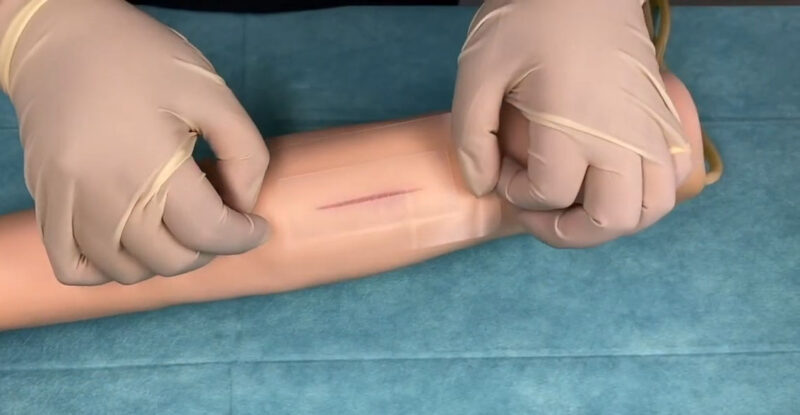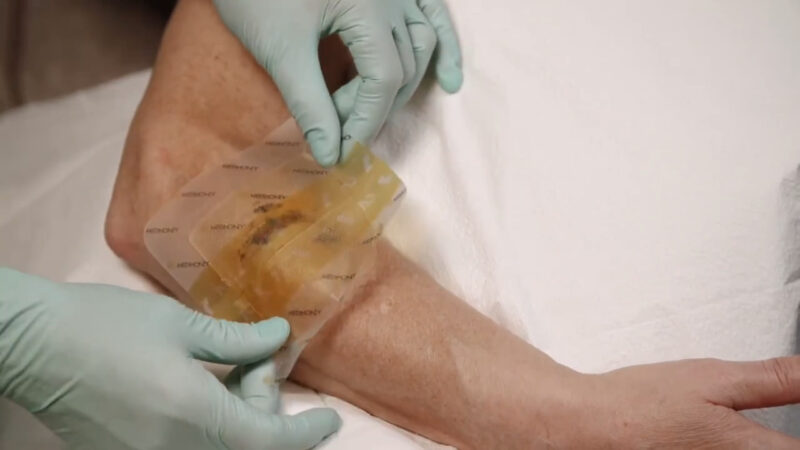Hydrogel dressings are a great way to provide hydration to your wound.
The benefits of using hydrogel-based dressings for wound care are vast, especially if you know how to administer the gel properly. An excellent source for providing moisture to a dry lesion, hydrogel dressings act fast to help cool down a wound, as well as provide temporary relief from pain for up to six hours. Here are a few quick guidelines on when to use hydrogel dressings, its wound healing advantages and also when you should try to abstain from using hydrogel.
How they work
Hydrogel dressings consist of 90 percent water in a gel base, according to the medical journal Apple Bites, and serve to help monitor fluid exchange from within the wound surface. By keeping the wound moist, the hydrogel dressing assists in protecting your body from wound infection and promotes efficient healing. Hydrogel dressings generally come in three different forms, including:
- amorphous hydrogel: a free-flowing gel, distributed in tubes, foil packets and spray bottles
- impregnated hydrogel: typically saturated onto a gauze pad, nonwoven sponge ropes and/or strips
- sheet hydrogel: a combination of gel held together by a thin fiber mesh
Healing benefits

Because of the moisture provided to the wound from the hydrogel dressing, common healing phases such as granulation, epidermis repair and the removal of excess dead tissue become simplified. In addition to aiding the wound treatment stages, the cool sensation provided by the hydrogel to the wound offers relief from pain for at least six hours. When hydration is provided for the wound bed, discomfort experienced from changing the dressing becomes reduced, and the risk of infection also becomes decreased.
When to use
The following types of wounds are the most suited for being treated with hydrogel dressings:
- dry or dehydrated wounds
- partial or full-thickness lesions
- abrasions or severe scrapes
- minor burns
- wounds with granulated tissue development
- radiation skin damage
It is important to remember to avoid hydrogel dressing use when a wound is extremely moist or displaying heavy exudate. In most cases, hydrogel dressings will need a cover dressing because they are often difficult to secure and can dehydrate easily if not covered effectively.
Dressing changes

It is advised to change your hydrogel dressing no less often than every four days to stop the covering from becoming too close or attached to the injury site. You can essentially tell if it is time for a dressing change due to an abundance of fluid that indicates that the wound could be receiving too much hydration. If you are using an amorphous type hydrocolloid dressing, remember to rinse off any leftover gel with a wound cleanser or normal saline solution if necessary.
As for removing the impregnated gauze or sheet hydrogel, gently lift an edge up and peel back slowly after soaking the covering in saline solution to help soften the bandage. Always remember to use general safety precautions when removing the dressing, such as washing your hands, wearing gloves and disposing of the bandage immediately after taking it off.
FAQs
Are hydrogel dressings safe for children?
Yes, hydrogel dressings are generally safe for children. However, it is always best to consult with a doctor before using any new wound care product on a child.
Can I use hydrogel dressings on my face?
Hydrogel dressings can be used on the face, but it is important to choose a non-comedogenic formula that will not clog your pores.
How long can I leave a hydrogel dressing on?
Hydrogel dressings can be left on for up to 7 days. However, it is important to check the dressing daily for signs of infection or leakage.
Are hydrogel dressings covered by insurance?
Hydrogel dressings are sometimes covered by insurance. It is best to check with your insurance company to see if they are covered.
Final words
Hydrogel dressings are a versatile and effective wound care product. They can be used to treat a variety of wounds and provide relief from pain. However, it is important to use them correctly and to consult with a doctor if you have any questions.







